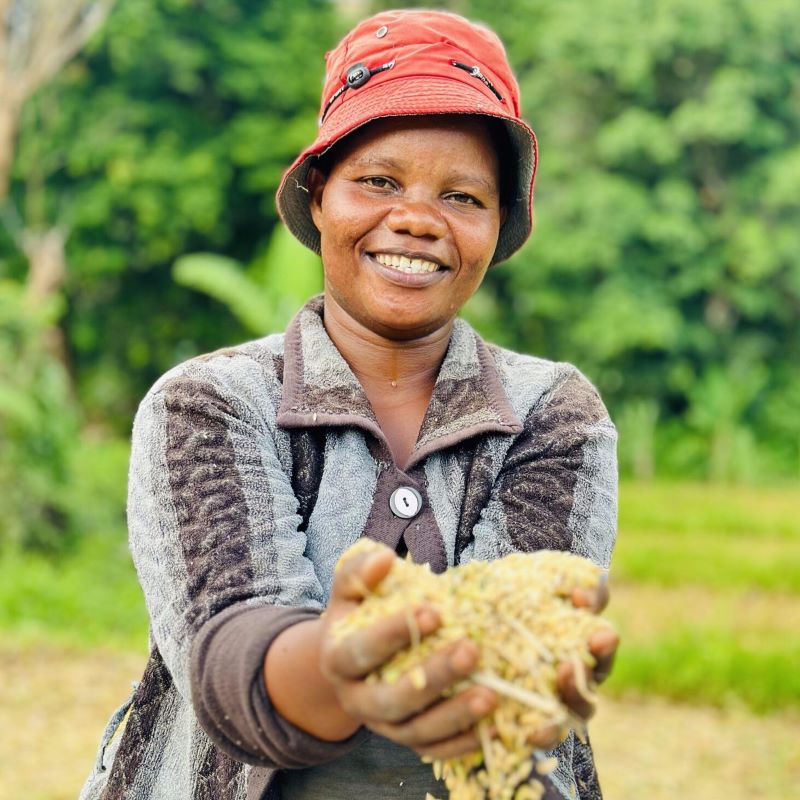You probably already know more about these kinds of trees than you realize.
The idea of staple foods is probably a familiar one. Staple crops like corn, wheat, rice, and potatoes are an important part of many diets. Most world cuisines eat one or two of these staples almost every single day. Many Asian diets start with rice, with veggies, meats, and sauces being added on later. African cuisines have similar composition, but often use a corn meal mash instead of rice. Your own diet may be similar, or may regularly include bread, noodles, or staples in some other form.
These crops are mostly annual crops, which means that farmers typically plant, harvest, and replant them every year. This happens through a variety of methods, some of which are more sustainable than others. The most common practices result in a large amount of carbon being released from the soil and into the atmosphere with each year’s harvest.
Staple trees however, can help provide relief to the soil and atmosphere, while still supporting people’s diets.

A tree grows in Haiti
What kind of trees are staple trees?
Staple trees are trees which are capable of growing foods that can serve a similar role in people’s diets. Bananas and avocados are two which farmers participating in Plant With Purpose programs commonly grow.
The varieties of fruit grown in this way have a wide range of uses. Bananas and breadfruit can easily add starchy substance to a diet, whereas coconut or avocados can add fats and oils. Many farmers also grow legumes in this way. Some of Africa’s most iconic trees- the baobab, the marula, the argan, and the moringa tree can also be described as tropical staple trees.
What sets these trees apart from the ones mentioned earlier is that they are perennial plants. This means that they have a life that spans multiple years and they generally remain productive throughout a harvest cycle.
Because these fruits grow on trees to be collected rather than in rows to be harvested en masse, more nutrients to remain in the soil and less carbon is released into the atmosphere. The tree roots can also help stabilize the soil if farmers grow annual crops nearby. This method is particularly helpful on steep hillside farms, where the poorest members of farming communities tend to work.

Fruit is harvested from a tree in the Dominican Republic
The key isn’t a total shift, but diversity and integration
Our ideal outcome isn’t one where farmers completely abandon rice and maize in favor of avocados and bananas. There are likely negative effects that would come of such a change. What is more ideal is a strong understanding of how these trees interact with annual crops and how they can work to offset some of their disadvantages.
One common way our partners practice this is through multistrata agroforestry. When they grow annual crops beneath the cover of tropical staple trees, the soil beneath them is healthier and more resilient.
A main target of Plant With Purpose’s environmental curriculum is to promote diversity in a number of different ways. Crop diversity leads to a more balanced diet, which improves nutrition overall. This also diversifies one’s income sources, and increases resilience to food shortages or crop diseases.
We believe knowledge is key, and when the world’s rural, poor communities mobilize to spread and share this knowledge, the entire planet benefits. Want to help fund a Farmer Field School and other activities? Learn about becoming a Purpose Partner today.


















Wonderfull make shift to poverty alleviation and climate change adversaries. Great job, contue. Dr. Moses Aol Jabuya, Kenya email [email protected]
A wonderfull make shift to the world global catastrophies of climate change. Good worked research continue.
A wonderfull make shifts in the world of catastrophic climate change phenoma. Good work continue. PhD in project planning and management. Coming up with such project in Kenya, to save the plate. Thanks.